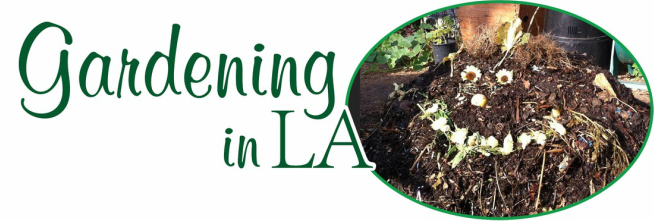| | For the first time in years – since the advent of the drought almost a decade ago – I’ve planted a second batch of tomato plants at the end of May. This used to be my general practice, planting a first batch when 4” containers first appeared in nurseries in February and March; and then another batch in May when the first-batch plants were reaching the second rung on their cages, about 24 inches, beginning to blossom, and just fertilized. Until then, I’d kept nipping off any blossoms that appeared earlier so each plant’s energy could focus on establishing a strong root system rather than beginning to expend energy in setting and maturing fruit. So after all these recent weeks of gloomy overcast with pleasant mid-70s daytime temperatures and low-60s nighttime temperatures, it finally occurred to me to get another batch of tomato plants growing to guarantee my late-summer harvest after the first-batch plants had quit bearing -- except for the cherry tomatoes, which as indeterminant varieties should continue bearing through at least fall. Of course, this new planting will face its own challenges, beginning with a bit of a heat wave this week and daytime temperatures in the upper 80s, although continuing with the soothing morning fog and nighttime temperatures in the low 60s. We’ll see how the magic works this time around. Old and New Chard and Kale I’d finally pulled the old purple and green chard plants that we’d been eating from since last fall but were now producing only tiny leaves and 6-foot seed stalks. They’ve gone on to their next life, enrichening the compost pile. I’m now harvesting from the hugely lush new plants in salmon and pink and red-purple colors. We’re also harvesting from the dozen or so Tuscan or Dinosaur kale plants came up from seed sown weeks ago. Both of these “greens” make a great combination of textures and nutrition in raw salads, stir-fried in omelettes, and adding to soups and stews. Boysenberries The long-lasting overcast and chilly weather are extending the boysenberry ripening. In the past, we’ve had a couple of quarts in the week of Mother’s Day. This year, we’ve had a handful ripening every other day since before Mother’s Day – a good three weeks – and the bush is still full of many more berries to ripen. Also because of the weather, the berries aren’t as ripe and I’d like them, but I still wait until the last possible moment to pick them. The three cues/clues to the perfect moment of ripeness are 1) the berries have turned from bright-shiny to dull-matte purple, 2) the green petal cap has dried to tan brown, and 3) “tickling” the berries to fall gently into the palm of your hand (if you try to pick the berry and it won’t easily release, it's not yet ready and will be tart!). Sowing Summer and Winter Squash Seeds All squash are grown during the heat of summer. How long they grow and when we eat them is determined by whether they’re “summer” or “winter” squash. Summer squash – we eat these immature when they’re young and tender, generally immediately after harvesting during the summer, like zucchini, crookneck, scallopini, pattypan. Winter squash – we let these develop fully until the skins are hard enough that they can’t be easily punctured with a fingernail, generally stored for eating during the winter, like pumpkins, acorn, delicata, butternut, spaghetti, dumpling. Squash blossoms – we harvest these as soon as they develop on both summer and winter squash and prepare them immediately. Adjust Irrigation Schedule Assuming that our “real” hot summer weather is almost upon us, it’s time to adjust automatic and manual watering patterns so that we continue to teach plant roots to grow deeply for water for the rest of the summer. Make sure that irrigation drip lines, soaker hoses, sprinklers, and trenches are in place before root systems get too large. Water plants deeply so the water sinks below the plant’s root system every time. Watering too frequently means that the water stays within the top inch or two of soil, and this makes the plant susceptible to drying out during hot weather because the soil several inches down where the roots are isn’t kept moist. Mulch the soil with organic matter such as compost, leaves or grass clippings to temper the drying and heating effect of the sun, and irrigation will be more effective with less frequency and quantity. For more monthly tasks, see June. For more main-topic blogs from past years, see Homepage. |
|
0 Comments
Leave a Reply. |
Categories |
























 RSS Feed
RSS Feed